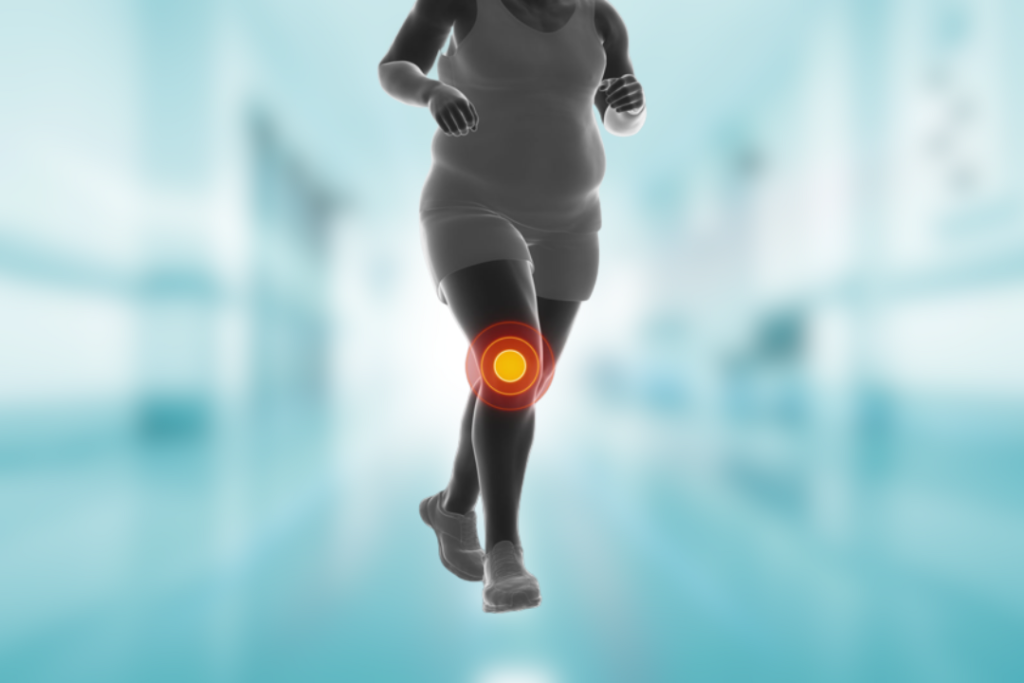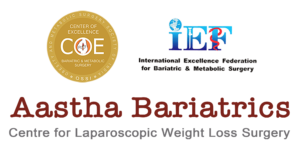
Harshalee Parkar
Bariatric Dietician & Content Writer

Obesity and Bone Health (Relationship) & Impact

Bone is a living, metabolically active tissue. To ensure skeletal structure and integrity, the size and shape of bones are accurately modeled and reshaped over the course of a lifetime. During bone remodeling, the bone is capable of coordinating the activities of osteoblasts, osteocytes, and osteoclasts, thereby maintaining the dynamic coupling balance of bone metabolism, in which osteoblasts (bone formation) and osteoclasts (bone resorption) play pivotal roles. The ability of bone marrow mesenchymal stem cells (BMSCs) to differentiate into osteoblasts and adipocytes is a dynamic balance.
In addition, bones exhibit the characteristics of endocrine organs, which secrete a variety of hormones to participate in the body’s endocrine cycle. For example, bone can secrete estrogen, androgens, follicle suppressant, and other sex hormones to aid in reproduction, cellular senescence, and osteoporosis (OP).
In addition, fat cells in bone marrow can secrete a variety of adipokines, including adiponectin, leptin, via autocrine and paracrine mechanisms, which play a crucial regulatory function in the local and systemic metabolism of bone marrow.
There are numerous metabolic osteopathies, such as OP, bone tumor, and inflammatory arthritis, in which this delicate balance is disturbed.
verweight and obesity are characterized by an abnormal or excessive accumulation of fat, which can be detrimental to health. The body mass index (BMI) is a simple ratio of height to weight that is frequently used to differentiate between individuals who are overweight and those who are obese.
The World Health Organization has made the categories according to persons BMI, which will help to determine weather the person has a normal weight, overweight or underweight.
Normal | <25 |
Overweight | 25 – 29.9 |
Obese I | 30 – 34.9 |
Obese II (Morbid obesity) | 35 – 39.9 |
Obese III (Super obesity) | 40 and above |
Consequently, the BMI thresholds for overweight and obesity may be more applicable in Asian nations. Certain disease conditions are associated with risk and prognosis when overweight and obese.
Obesity type and bone
Bone health can be significantly impacted by obesity. The two primary forms of obesity are gynoid (pear-shaped) and android (apple-shaped).
Gynoid Obesity is defined by excess fat storage in the hips and thighs, whereas excess fat buildup in the abdomen area characterises Android Obesity. In comparison to gynoid obesity, it has been discovered that android obesity has a worse effect on bone health.
Inflammatory cytokines can be produced more frequently in excess adipose tissue, which can encourage bone resorption and lower bone density. Leptin, which can hinder bone growth and accelerate bone resorption, can also be produced by adipose tissue.
Also, people who are obese are more likely to have insulin resistance, which can be harmful to bone health. Increased blood glucose levels brought on by insulin resistance may accelerate bone resorption and hinder bone growth
The impact of obesity on bone health:
Obesity can have a significant impact on bone health, both in terms of bone tissue quantity and quality. Increased mechanical stress on the skeleton is one way that obesity can negatively impact bone health. This can increase the risk of fractures in weight-bearing bones such as the hips, knees, and ankles.
Changes in hormones and other signaling molecules that regulate bone metabolism are a second way that obesity can negatively impact bone health. Adipose tissue (fat) produces numerous hormones and cytokines, some of which can have detrimental effects on bone. For instance, elevated levels of leptin, a hormone produced by fat cells, can result in decreased bone density and an increased risk of fracture.
Moreover, obesity is frequently associated with poor nutrition, which can also have negative effects on bone health. Obese individuals may consume diets high in calories but deficient in important bone-building nutrients such as calcium and vitamin D. This can decrease bone density and increase the risk of fractures.
The underlying mechanisms
Obesity can negatively impact bone health through a number of underlying mechanisms.
Adipokines: Adipose tissue produces a variety of hormones and cytokines called adipokines, which can have a direct effect on bone metabolism. For instance, leptin is an adipokine that inhibits bone formation and promotes bone resorption. Other adipokines, including adiponectin, may protect bone health.
Obesity is associated with chronic low-grade inflammation, which can promote bone resorption and result in a loss of bone density. Osteoclasts, or cells that break down bone tissue, can be stimulated by inflammatory cytokines such as interleukin-6 (IL-6) and tumor necrosis factor-alpha (TNF-).
Insulin resistance: Insulin resistance, a common characteristic of obesity, can negatively impact bone health. Insulin resistance can cause elevated glucose levels in the blood, which can inhibit bone formation and stimulate bone resorption. In addition, insulin can affect bone metabolism directly by binding to insulin receptors on bone cells and regulating their activity.
Mechanical loading: Excess body weight can lead to an increase in bone mass by increasing the mechanical loading on bones. However, this increase in mechanical loading may not be sufficient to offset the negative effects of other factors, such as inflammation and adipokines, in obese individuals.
The role of lifestyle factors
Diet: A healthy diet that includes sufficient amounts of calcium, vitamin D, and other nutrients essential for bone health is crucial for maintaining strong bones. It is essential for individuals with obesity to maintain a nutrient-dense, well-balanced diet in order to promote bone health and weight control.
Weight-bearing exercise, such as walking, jogging, and resistance training, can help build and preserve bone density. Regular physical activity can also aid in weight management, reduce inflammation, and enhance insulin sensitivity, all of which are beneficial for bone health.
Smoking has been shown to have a detrimental effect on bone health, especially in women. Smoking can increase inflammation and oxidative stress, which can reduce bone density and increase the risk of fractures.
Alcohol consumption: Heavy alcohol consumption has been linked to decreased bone density and increased fracture risk. In contrast, moderate alcohol consumption has been linked to increased bone density in a number of studies.
Stress management: Chronic stress can lead to increased levels of cortisol, a hormone that can negatively impact bone health. Stress management techniques such as meditation, yoga, and deep breathing are beneficial to bone health.
Maintaining a healthy weight: Obesity is a major risk factor for osteoporosis and fractures, especially in postmenopausal women. By maintaining a healthy weight through diet and exercise, this risk can be decreased.
Adequate calcium and vitamin D intake: Calcium and vitamin D are indispensable nutrients for bone health. A sufficient intake of these nutrients can aid in maintaining bone density and reduce the risk of fractures. Dairy products, leafy green vegetables, and fortified foods are excellent sources of calcium in the diet. Vitamin D can be obtained through exposure to sunlight, fortified foods, and supplements.
At Aastha Bariatrics is dedicated to providing comprehensive support to patients during and after their weight loss journey. Led by renowned bariatric surgeon Dr Manish Motwani. Our team of specialists will assist you in every possible way to minimize the chances of loose skin and take prevention before and after the surgery. We understand the concerns of our patients and strive to make the process as seamless as possible.






